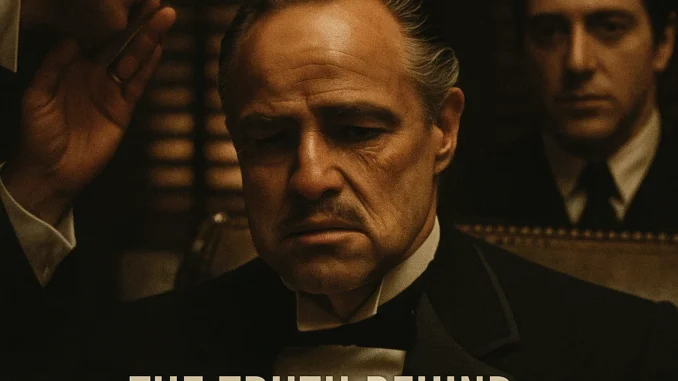
Marlon Brando’s performance as Don Vito Corleone in The Godfather is often described as mythic, unforgettable, and larger than life. With just a whisper, a hand gesture, or a steady gaze, Brando commanded the screen, turning a mafia patriarch into one of the most iconic characters in cinema history.
But here’s the shocking truth: Brando rarely memorized his lines.
Instead, he had a peculiar habit—he asked crew members to scatter his dialogue on cue cards and tape them in unexpected places: on desks, on lamps, inside drawers, even pinned to the suits of his fellow actors. Imagine young Al Pacino, trying to hold a straight face while realizing Brando was reading lines off his very own chest.

Why did Brando do this? It wasn’t laziness—it was artistry. He believed that memorizing lines too rigidly drained them of spontaneity. By reading fresh words in the moment, he could react with a rawness and unpredictability that made his characters feel alive. Each pause, each mumble, each unexpected inflection became authentic rather than rehearsed.
The gamble paid off. Far from being a crutch, Brando’s unconventional method created a sense of intimate realism. Don Corleone didn’t sound like an actor reciting Shakespearean lines; he sounded like a man who had lived and suffered, speaking straight from his bones.

The Academy agreed—Brando’s Don Vito Corleone won him the Oscar for Best Actor, and his eccentric technique became the stuff of Hollywood legend.
So where did Marlon Brando hide his cue cards? Everywhere. But more importantly, he hid them in plain sight, transforming what looked like weakness into one of the greatest strengths an actor has ever brought to the screen.
